Costa Rica has a high population of crocodilians.
Caiman is a distinct species of the alligator family found in Costa Rica, while the American crocodile belongs to the Crocodiylia family.
Crocodilians are some of the longest surviving animals on earth; their fossils date back to the dinosaur age and still look the same as the current animals.
These reptiles are seen best on the banks, basking in the sun to absorb heat to regulate their body temperatures after swimming in the cold waters.
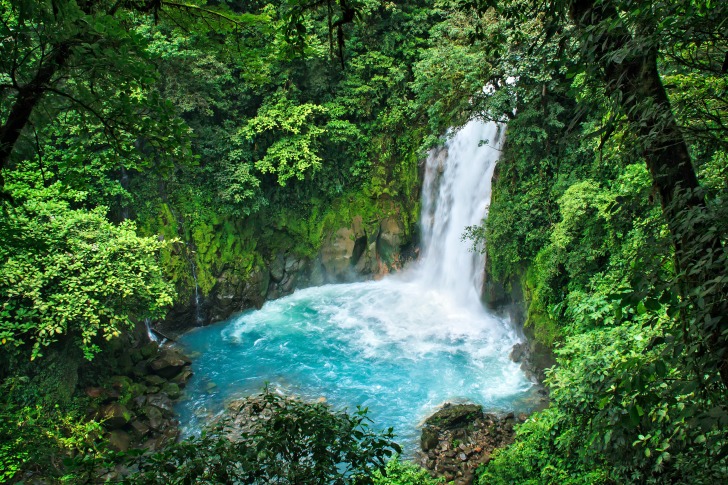
Contents
- Are There Alligators In Costa Rica?
- The Alligator Species in Costa Rica
- Is It Safe To Swim In Costa Rica?
- Interesting Alligator Facts In Costa Rica
- Alligator Vs Crocodiles, Similarities And Differences
- Three Safety Tips For Swimming In Alligator-Infested Waters
- Summary
- Costa Rica Safety Overview
- Frequently Asked Questions
Are There Alligators In Costa Rica?
The biodiversity and abundance of wildlife in Costa Rica, Central America, attracts many tourists.
Costa Rica is one destination where you can spot crocodilians, although not the famous American Alligator only found in the southern regions of our country.
Are you touring Costa Rica?
You will have an excellent opportunity to see alligator cousins (crocodiles and caimans).
The two reptiles are abundant in Costa Rica’s water bodies, and we have safe places from where you can see the animals.
Where Can I See Alligators-Like Reptiles In Costa Rica?
Tarcoles River Bridge
It’s the best spot to see hundreds of these water reptiles in Costa Rica.
The river is located on the Central Pacific side of Costa Rica on the road to Jaco.
The other popular places you can visit to see caimans are the canals of Costa Rica.
- Tortuguero
- Sierpe Wetlands
Palo Verde National Park is a famous bird-watching destination, but you can also take a boat tour to see the caimans basking in the sun.
Caimans and crocodiles don’t like mixing and socializing with one another.
So, when you see one species, the other may not be near that area.
The Alligator Species in Costa Rica
The American Alligator or just alligator (Alligator Mississipiensis) doesn’t thrive in Costa Rica.
The only Crocodilians you see are:
- American Crocodile (Crocodylus Acutus)
- Spectacled Caiman (Caiman Crocodilus)
Is It Safe To Swim In Costa Rica?
Costa Rica borders the Pacific Ocean on one side and the Caribbean Sea on the other.
The beaches on these waterfronts have a reputation for having big waves and fast currents, making most beaches ideal for surfing.
Costa Rica has a coastline of over 700 miles in both the Pacific and the Caribbean.
Beautiful beaches along the Costa Rica coastline are also perfect for swimming.
Before you venture for a swim on the Costa Rica beaches, note the following.
There are beaches in Costa Rica known for their rip currents.
A rip current is a narrow, strong current that can quickly pull unsuspecting beach-goers into deeper waters in the ocean.
It is caused by breaking waves on the shoreline, and as the water drifts back, it forms a channel with a strong current.
If you find yourself in a Rip Current, here is what to do:
- Don’t panic
- Don’t use your energy by swimming against the current, trying to fight it.
- Once the current ease, swim diagonally back to the shore if you are a strong swimmer.
- For weaker swimmers, float on your back and call for help.
- Learn to read the beach and tell where the rip currents are.
- Enquire from the locals to be on the safe side.
Beaches in Costa Rica Where You Can Swim Safely
Playa Espadilla
The beach is located in Manuel Antonio National Park.
It is a two-mile-long beach noted for its small waves and clear waters, making Playa Espadilla ideal for swimming.
It’s a famous beach for locals and tourists alike.
Manuel Antonio National Park also has two other beaches, which you can reach through a jungle trail.
The 30-minute walk in the jungle to the other beaches will allow you to see various wildlife.
Whale Tail Beach (Uvita Beach)
You have probably seen the beach on postcards or social media, a peninsula having a flat top and curving beaches on its side.
The reality on the ground is actual and not photo editing.
Uvita Beach is found in the Marino Ballena National Park, south of Costa Rica.
It has two beaches extending about two miles to the “tail” part.
The beach’s small waves make it perfect for all ages to swim.
Playa Conchal
Playa Conchal is located on the Nicoya Peninsula near Tamarindo beach.
You will find this crescent beach in a large bay of clear waters.
The waves on the beach are accommodating for swimmers.
You will need good sandals for walking around the beach.
The beach surface is made of small crushed sea shells, making beach walking difficult.
However, the shells help to maintain clear water, making it a perfect spot for snorkeling.
Playa Flamingo
Many beaches in Costa Rica have near black or dark brown sand.
Playa Flamingo’s almost white sand sets it apart from other beaches.
The beach derives its name from the fact that when the light is correct, the white sand appears to have a pinkish hue.
Waves on the beach are at a manageable level for swimming.
Playa Carrilo
It is a wide beach on the Nicoya Peninsula with warm waters and calm waves.
Carrilo Beach has no developments, making it quiet and ideal for families.
Playa Punta Uva
Located on the Caribbean side of Costa Rica, Playa Punta Uva is calm with clear waters and calm waves, making it a perfect place to cool off the tropical heat.
Palm trees behind the narrow sandy beach, and you spot sloths living near the beach.
Jaco Beach
Jaco Beach is a favorite destination for families with small children.
It has warm, calm, and shallow waters, primarily cloudy due to the fine sand on the beach.
The beach is about two and a half miles long and ideal for walking.
While here, make sure to watch the sunset on the beach.
Swimming Holes Away From The Beaches In Costa Rica
San Luis Waterfall
A 40-minute hike through the cloud forest will take you to the crowning glory of San Luis Valley.
Enjoy the Cloud forest scenery full of ferns, moss, and bromeliads during the hike.
The forest is also home to some rare birds only found in such habitat.
Montezuma Waterfalls
The three-tiered waterfall has a vast pool where the 24 m tall, lower falls plunge.
You can also hike to the other two waterfalls.
There is a rope swing on a smaller water waterfall for the daring to use for that big splash in the drop pool.
La Fortuna Waterfall
If you are feeling the heat after a tour in the jungles around Arenal volcano Cerro Chato in Costa Rica, take a hike down through the dense, rich vegetation to reach the La Fortuna swimming hole.
The 75 m tall waterfall drops into a pool where you can splash your summer heat away while feeling the spray from the dramatic torrent.
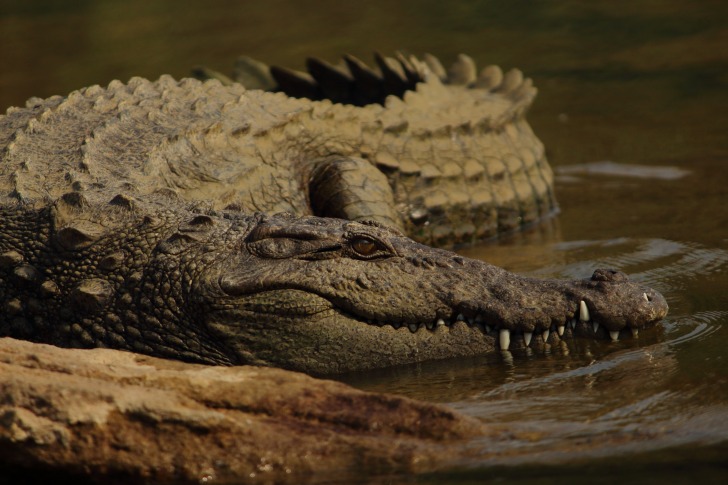
Interesting Alligator Facts In Costa Rica
- Caminans are most active at night.
- Caimans have excellent hearing
- Caimans have a robust sense of smell
- Caminans are stealth and ambush their prey.
- Caiman lead a solitary life
Alligator Vs Crocodiles, Similarities And Differences
The reptilians found in America may be confusing if you don’t know what to look for to differentiate them.
They all have similar skin structures, are carnivorous, and inhabit water bodies.
The crocodiles have a longer, sharp-pointed snout, while the gators and caimans have a broader and flat-shaped snout at the front.
Caimans are less in size than crocs and the American alligator.
It makes the animals more agile among the crocodilians.
Three Safety Tips For Swimming In Alligator-Infested Waters
There are records of attacks on locals and tourists alike by crocodilians living in Costa Rica waters.
Caimans, crocodiles, and alligators hunt for prey; don’t make yourself an easy target for the animals.
We advise you to shy away from waters strongly infested by gators.
The following tips are handy when swimming in waters suspected of harboring alligators or other crocodilians.
Adhere to the warning signs
The authorities in Costa Rica have mounted signs to warn visitors and locals of the danger lurking in specific water bodies.
The semi-aquatic reptiles are giant compared to man, with complete adaptations for swimming and hunting while in water.
An alligator, crocodile, or caiman bite can quickly render someone helpless in water and cause drowning.
Ensure your feet and hands are inside the boat when taking a ride
Alligators and other crocodilians will tend to scatter away from boats.
If you see the reptile following your boat, don’t panic, they are just curious and have no intent of capsizing the boat.
Don’t lure the animal into attacking by dangling your feet or hands in the water where they are present.
Do not let children and pets near the water with caimans and crocodiles
The reptiles are apex predators, meaning they eat both vertebrates and invertebrates.
As they grow, they become more daring and attack even large mammals.
Children or pets will become an easy target for a hungry caiman or crocodile.
Your dog should always be on a leash unless you want your furry friend to end up as an alligator dinner.
Always use a guide when touring infested waters
Summary
Costa Rica is a land full of biodiversity and a good destination for a vacation.
The Caribbean and Pacific Ocean beaches in Costa Rica offer excellent water sports and recreation opportunities.
Although Costa Rica will not offer you a chance to see the American Alligator, you will have an opportunity of seeing their cousins, the American Crocodile and Spectacle Caimans.
Costa Rica Safety Overview
READ THE FULL REPORT: Costa Rica Safety Review
Safety Index: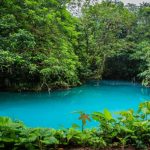
- OVERALL RISK: MEDIUM
- TRANSPORT & TAXIS RISK: MEDIUM
- PICKPOCKETS RISK: HIGH
- NATURAL DISASTERS RISK: MEDIUM
- MUGGING RISK: MEDIUM
- TERRORISM RISK: MEDIUM
- SCAMS RISK: HIGH
- WOMEN TRAVELERS RISK: MEDIUM
Frequently Asked Questions
How many people die every year from attacks by alligators?
Alligators are docile and will rarely attack humans.
The reported cases are minimal compared to attacks by crocodiles.
In Costa Rica, crocodile attacks are more common than those of caimans.
Do crocodiles hunt while in the oceans?
Crocodiles are adapted to thrive in salty waters but are mainly found in estuaries and murky waters.
Occasional surfer reports of crocodiles in the oceans are sightings of animals moving from one river mouth to another.
The animal will be migrating and not hunting while in the ocean.
Do alligators, crocodiles, and caimans venture out of the water to hunt?
These water-based reptilians are more adapted to hunting while in water.
However, gators that can venture far onto land are known to hunt for prey while moving on dry land.
Crocodiles rarely attempt to move far from their homes.
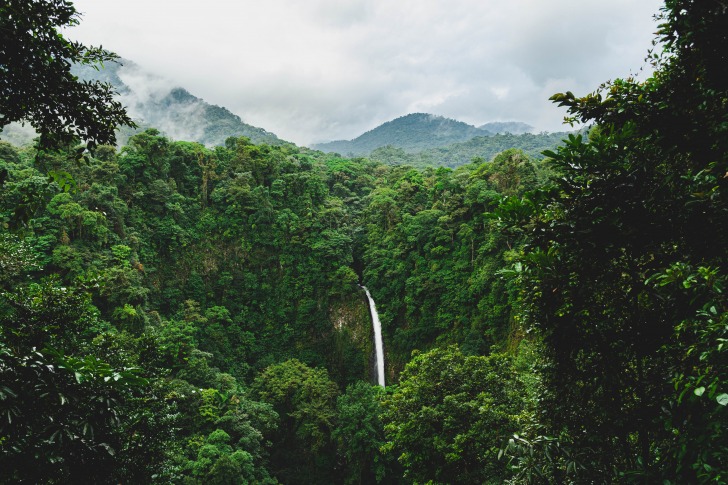
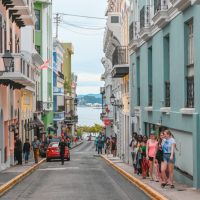
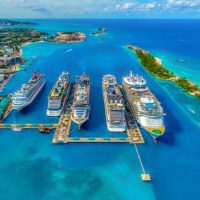
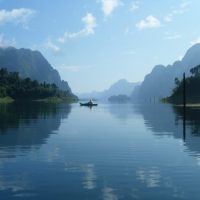
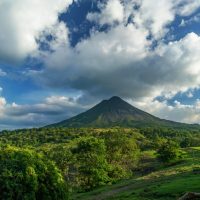
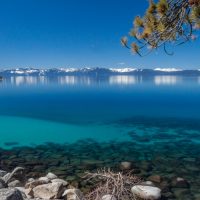






Costa Rica is a great destination for spotting crocodilians, including American Crocodiles and Spectacled Caimans.